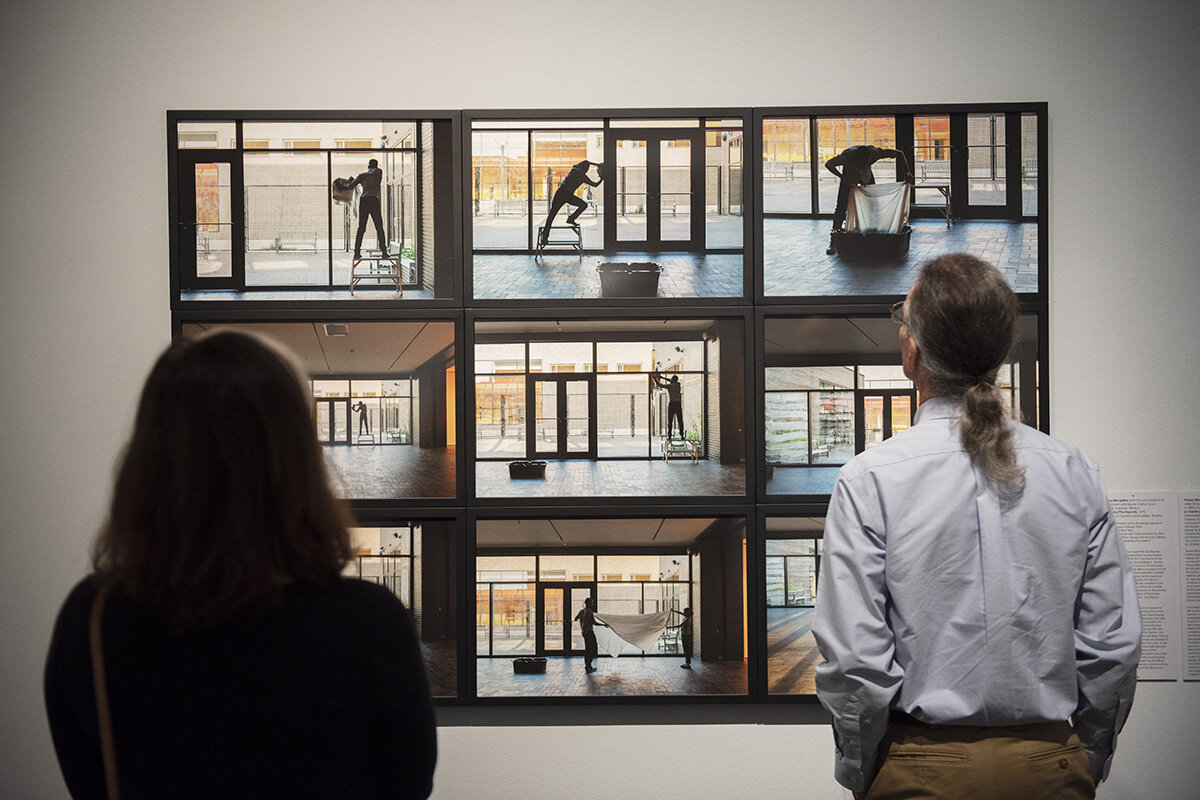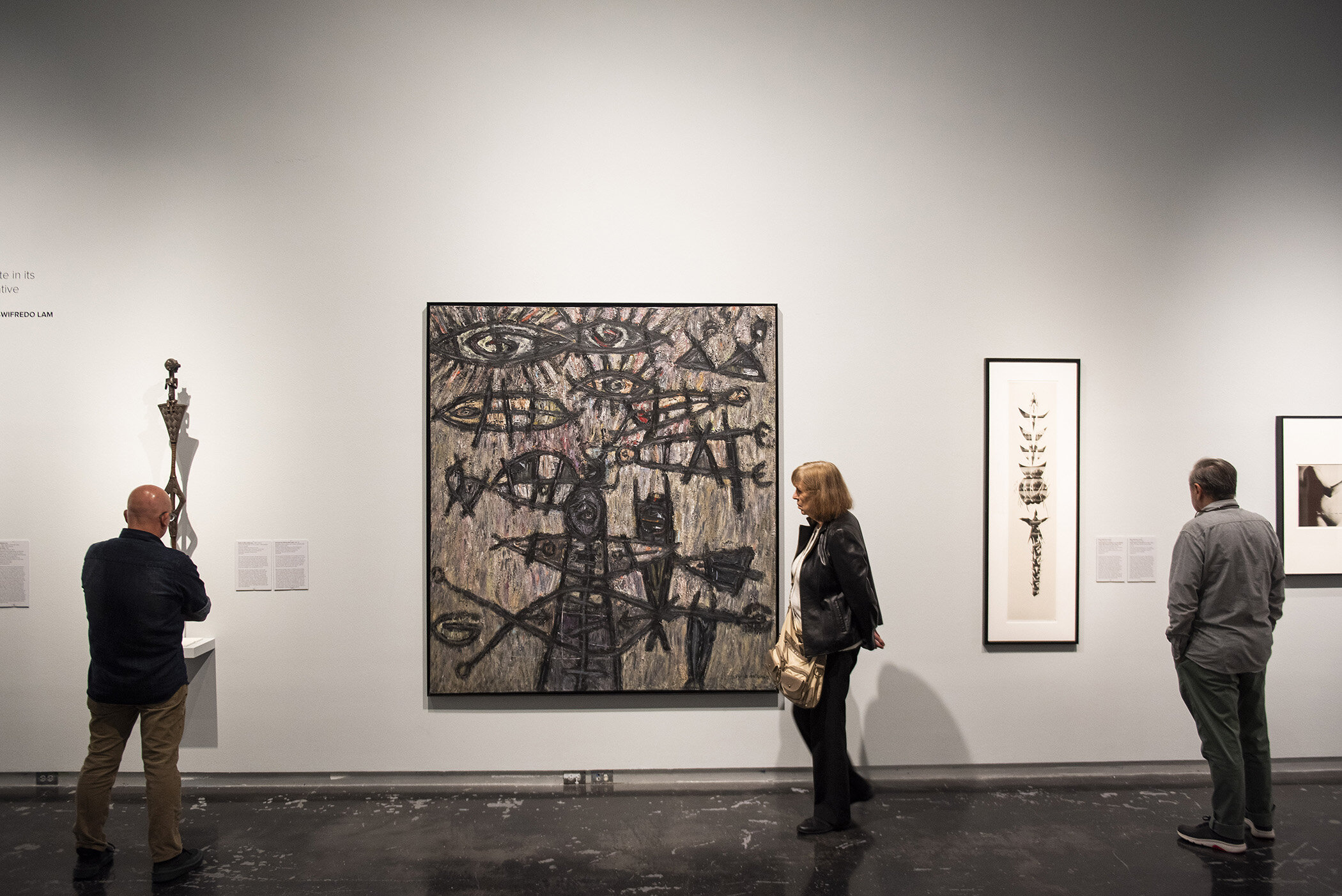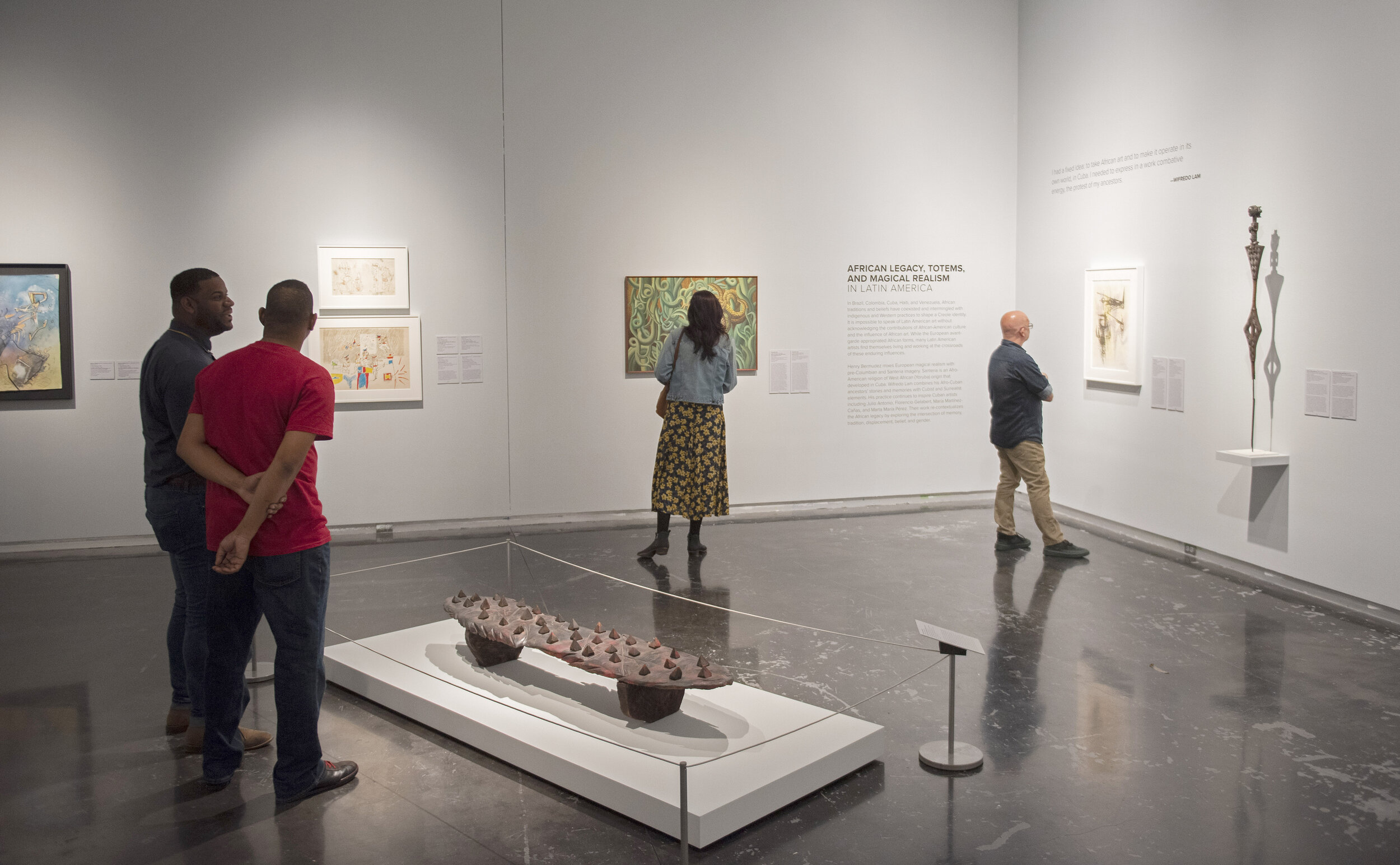If you haven’t seen Destination: Latin America yet, the countdown is on. You have until Sunday, February 9th to see this amazing collection of Latin American art comprising 29 artists from eight Latin American countries. Considering this exhibition on its own is not to be missed, but if you have seen the exhibition, we suggest a return visit to get a new perspective on LSU MOA’s Art in Louisiana permanent collection exhibition.
One of the strengths of Destination Latin America is how the art tells the story of exchange—between local and global, and global south and global north. The exhibition opens with a focus on the Mexican Artistic Revolution – the first American (not North American) art movement to have global impact and closes with Latin American artists addressing global issues, including specifically American issues.
How to get the most out of your last visit to Destination: Latin America
Seek and Find these connections:
Valadez, Romero, and Rivera
Louisiana favorite Caroline Durieux was among the American artists who worked in Mexico City exchanging ideas with Diego Rivera and Clemente Orozco Romero among others. Compare Jose Raul Anguiano Valadez’s Untitled (Woman Reclining) with Romero’s portrait of Durieux in our Introduction to Art in Louisiana and Rivera’s portrait in our Portrait Gallery.
Bravo and Weston
Manuel Alvarez Bravo’s grid of photographs focus on shape, pattern, and shadows of high modernism. Compare Alvarez Bravo’s Window on the Agaves with Edward Weston’s Artichoke Halved featured in the Introductory gallery of Art in Louisiana.
Catunda and Kohlmeyer
The abstract works of Leda Catunda and Ida Kohlmeyer with their color fields are great points of comparisons by two female artists. While Kohlmeyer worked in an abstract expressionist manner, focused on formal qualities, Catunda uses that formal language to reject hardness of abstract or “concrete” art. She softens her work by stitching together mass-produced fabrics she references lived-experience.
Gelabert and Birch
The “African Legacy” section includes Florencio Gelabert’s Isla de Cuba which addresses his Afro-Cuban heritage and displacement. The spiked forms recall traditional African nkisi much like the nails in Willie Birch’s own sculpture, Memories of Bertrandville, which reflects on his African and Louisiana heritage in our Contemporary gallery.
Margolles and Bachman
Teresa Margolles’ photographic installation addressing America state violence against black men could be considered alongside Jonathan Bachman’s documentary photograph of protests in Baton Rouge following the shooting of Alton Sterling.
Take one last look at Destination: Latin America at LSU Museum of Art closing on February 9, 2020 at 5 p.m.



